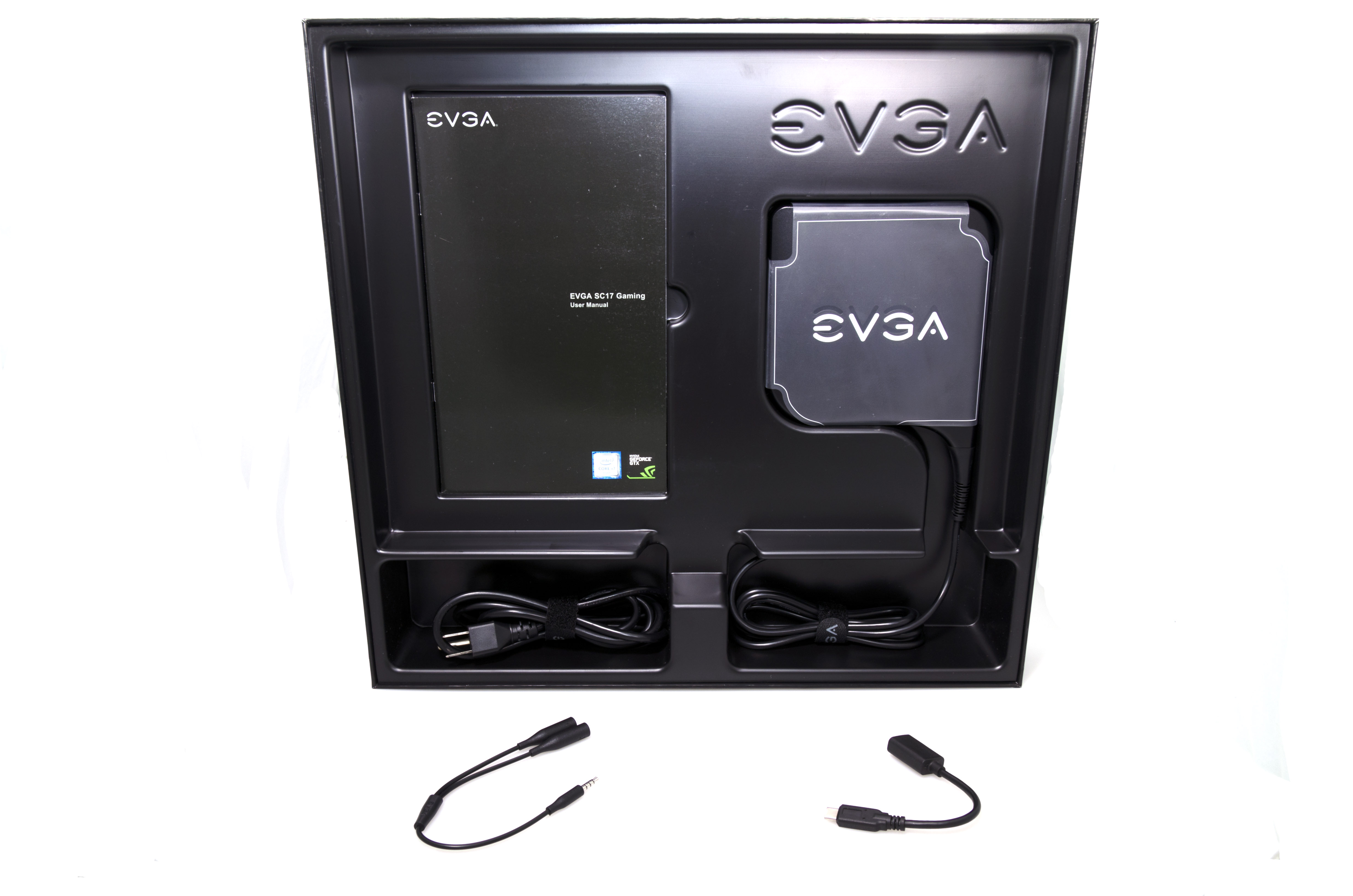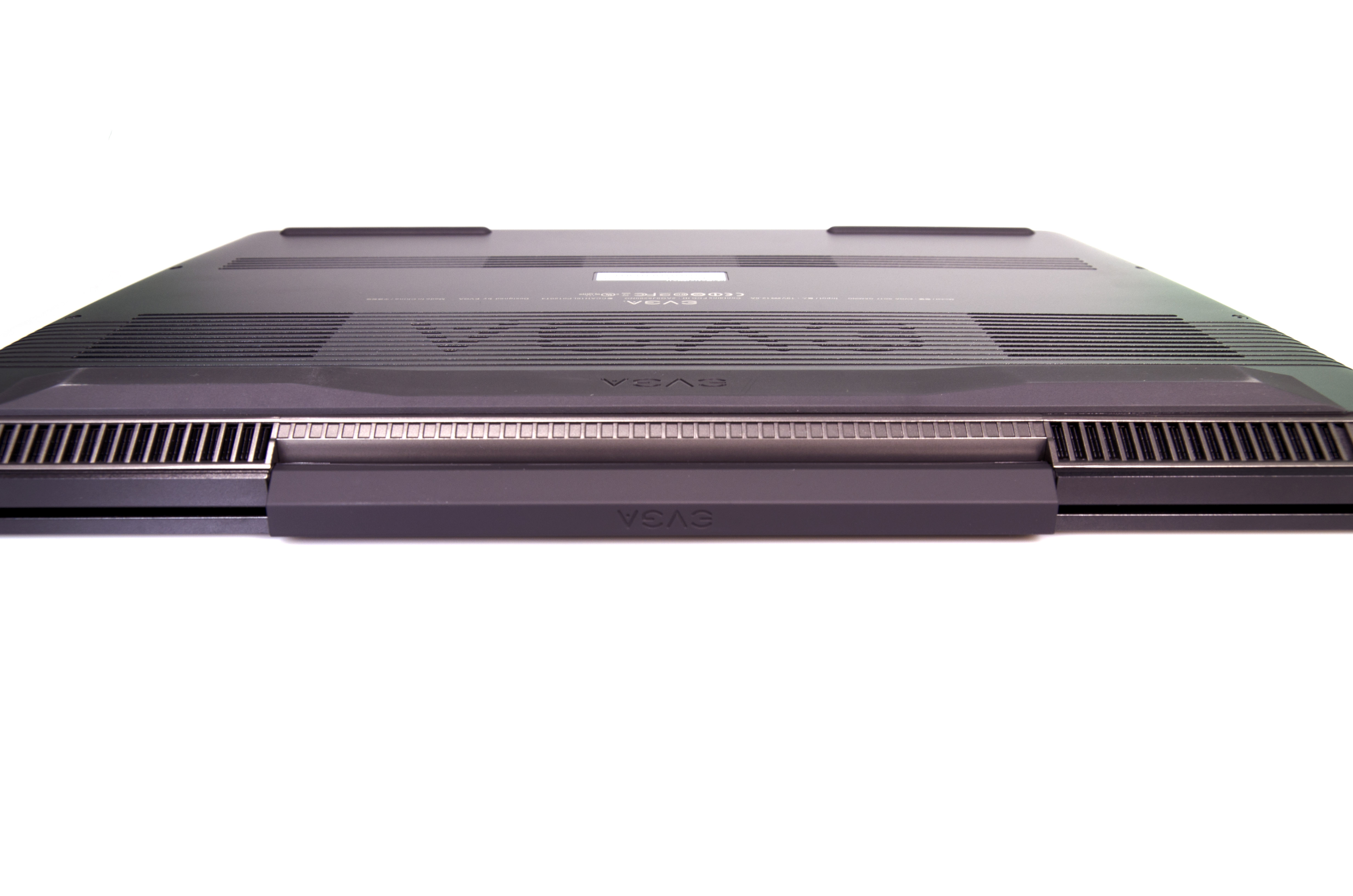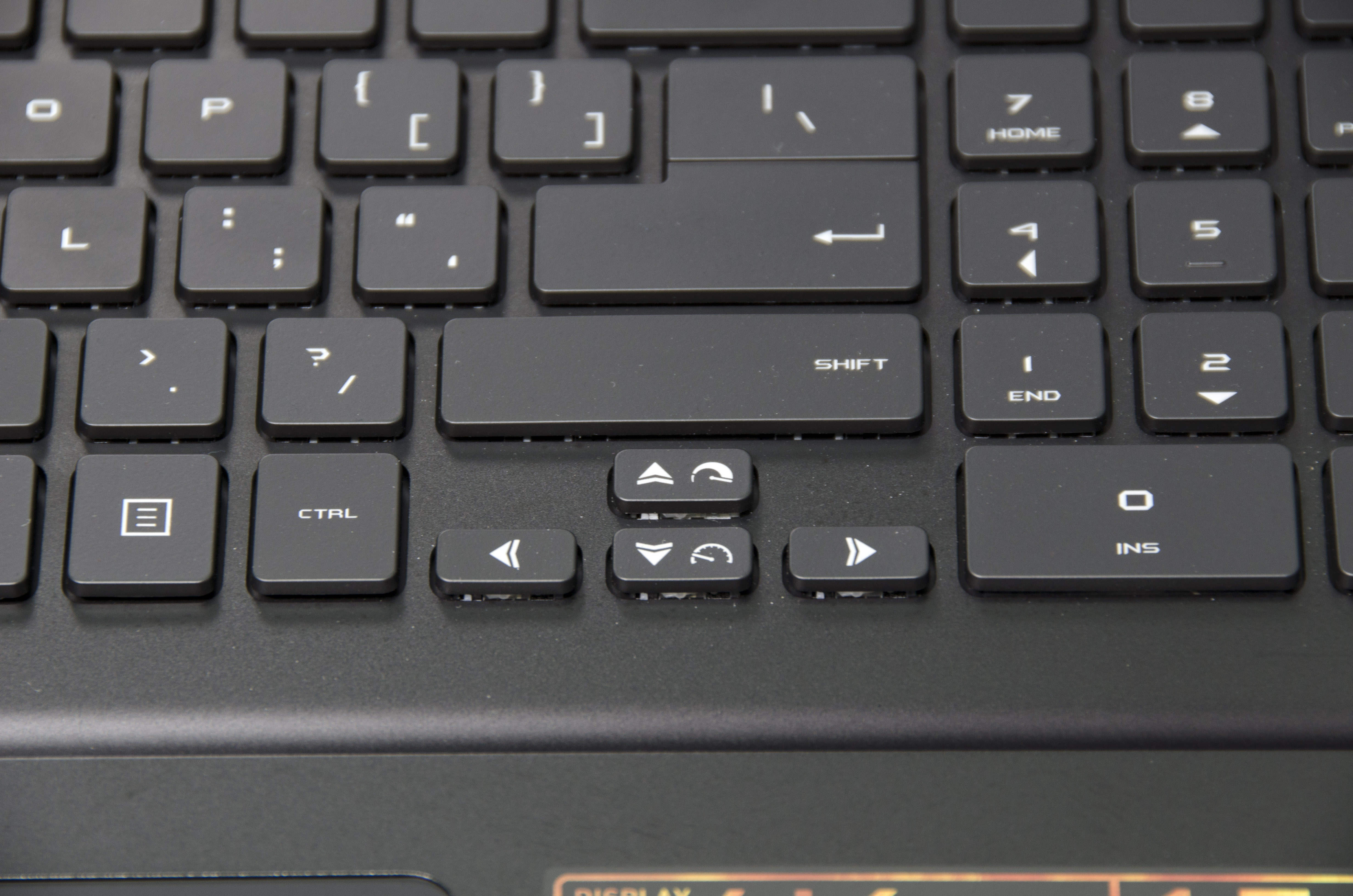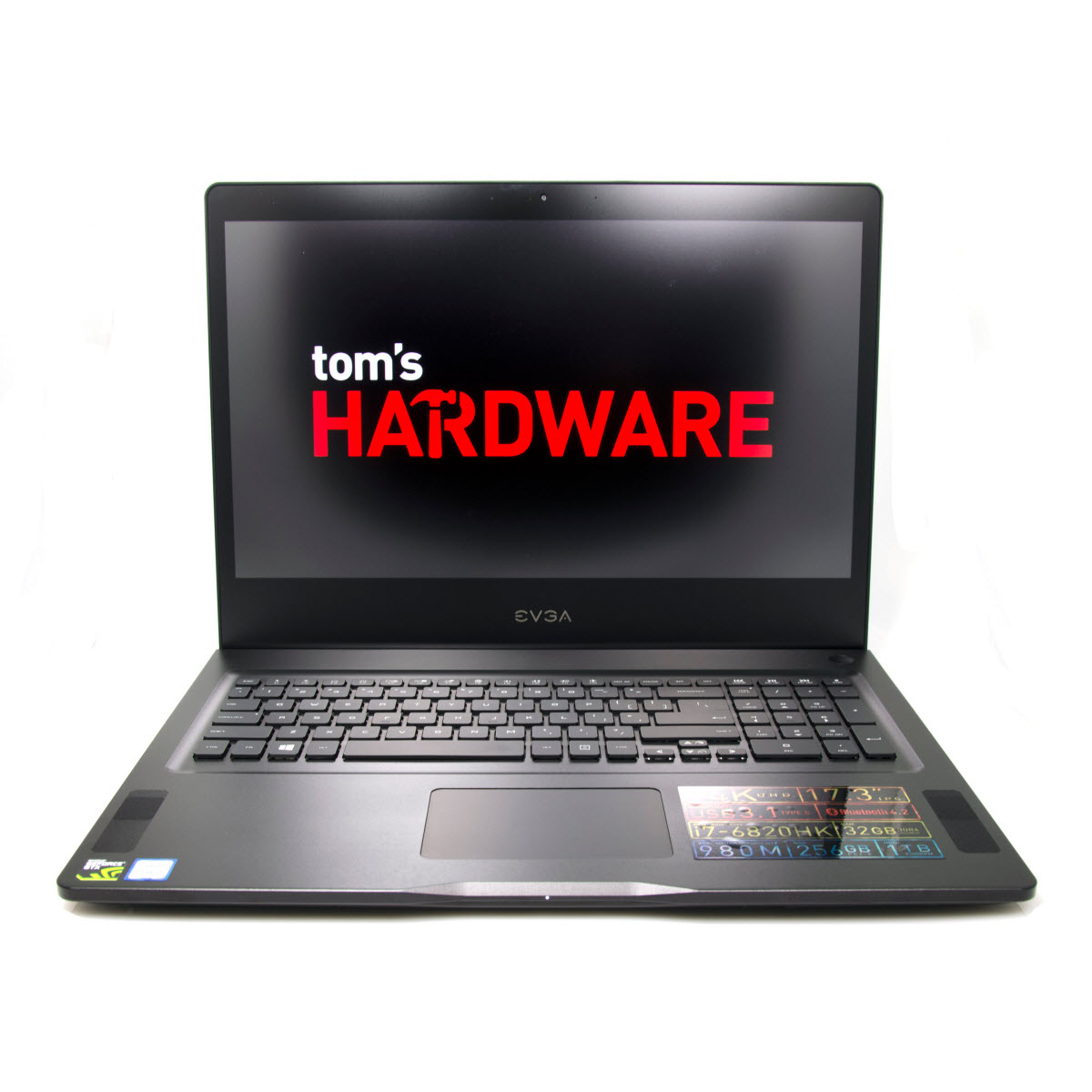EVGA SC17 Gaming Laptop First Look
Hands-On And First Impressions
[Editor's Note: The following content is intended to be a first look, with some hands-on impressions and a few benchmarks. We will be conducting full reviews of gaming laptops soon enough, with a battery of exhaustive tests, including more thorough benchmarks (we're currently revamping our benchmark suite), and deeper analysis. But we wanted to get some of the newer models into the lab for some early testing.]
EVGA just launched a new 17-inch 4K gaming laptop called the SC17, which features an overclockable Intel Core i7-6820HK CPU, 32GB of DDR4-2666 memory and an Nvidia GeForce GTX 980M 8GB graphics module. We were able to get our hands on one before its official introduction, and we spent some quality time with it to determine what kind of performance you can expect from EVGA's first-ever 100 percent company-designed gaming laptop.
Specifications
MORE: All Laptops Articles
MORE: Laptops in the Forums
The SC17 sells for the high-end price of $2699, but comes packed with decidedly high-end hardware. The Core i7-6820HK and GeForce GTX 980M are both premium mobile components made even more potent by the SC17's overclocking abilities. EVGA's laptop is completely customizable with a fully-accessible UEFI BIOS. The company even loads a mobile version of its overclocking software called Precision Mobile, which can be used to manipulate the CPU and GPU settings in Windows 10.
EVGA packs 32GB of DDR4-2666 into the SC17, offering transfer rates not often seen in the mobile space. However, that comes at the cost of CAS latency, and the two 16GB G.Skill modules inside the SC17 sport 18-18-18-43 timings, which is roughly equivalent to the memory bandwidth of DDR4-2133 with a lower CAS 15 latency.
The SC17's storage is also exceedingly performance-driven, with a 256GB Samsung SM951 M.2 NVMe SSD for the operating system and programs, and a 1TB mechanical disk for user data. The almost-instant response of an NVMe SSD makes program installation and load times snappy, and we like that EVGA gives you more room in the likely event you run out of space on the boot drive. Offering 512GB of solid-state storage would have been even better, though that would have added hundreds of dollars to the price tag.



The SC17 comes up a bit short on USB connectivity, with only two USB 3.0 ports and a single USB 3.1 Type-C port on the right side of the chassis. It is a good thing that EVGA includes a USB Type-C to Type-A adapter because, if you connect a mouse and USB headphones, you're all out of Type-A ports.
Get Tom's Hardware's best news and in-depth reviews, straight to your inbox.
Sadly, the Type-C port doesn't offer any special functionality beyond its 10 Gb/s data rate, such as Thunderbolt 3 or video output. But you can connect the SC17 to an external display using an HDMI 1.4 port or one of two mini-DisplayPort connectors.
The SC17 is both sleek and sophisticated. Although the 17-inch laptop is barely over an inch thick, it weighs 8.13 lbs. It won't be something you want in your lap for extended periods of time. On a desktop or table, though, the SC17 sits comfortably with ample airflow reaching its underside intake fans, which then force hot air out of the system's back.




Two mid- to high-range speakers are visible on the left and right sides of the base, and two subwoofers provide low-end response from the bottom of the chassis. EVGA gives you a better audio experience than you'd expect from most laptops, but a good pair of headphones is still preferable for gaming. Fortunately, the SC17 includes a mic-in and headphone-out splitter to accommodate high-end headsets.
Display
EVGA's SC17 features a 17.3-inch UHD 4K (3840x2160) IPS display. That's an interesting choice for a gaming laptop when you consider the GeForce GTX 980M graphics module, which can't muster playable frame rates at the panel's native resolution without sacrificing detail settings. The display seems better suited to a laptop sporting a desktop-class GTX 980. Still, the extra screen real estate is great for productivity.
Given a 60Hz refresh rate (and considering EVGA's close relationship with Nvidia), we do wish the SC17 included G-Sync to help improve the experience of a not-quite-fast-enough GPU at 4K resolutions. Moreover, the display suffers from slight LED backlight bleeding, which is really only noticeable during especially dark scenes like our Metro: Last Light Redux benchmark. Conversely, you get acceptable viewing angles and minimal tearing. The screen isn't as vibrant as some of the other models we've reviewed recently, but it sports a sharp picture and is well-suited for gaming.
Input Devices
The SC17 features a white LED-backlit keyboard with scissor-switch keys. The lighting can be adjusted using a hotkey or EVGA Precision Mobile, but you can only change the brightness and effect setting. Full-color RGB LED backlighting is not available; however, the keyboard is at least sleek and comfortable.





The SC17 also features one-touch overclocking. Holding the function key and pressing up on the directional pad automatically overclocks the CPU and GPU to EVGA's preset SC mode. Continuing to press the up key while holding down the function button scrolls through user-defined overclocking profiles, which are configured through the Precision Mobile software. Holding function and pressing the down key actually underclocks those same two components, increasing battery life at the cost of peak performance.
It looks like EVGA figured out that gamers dislike touchpads. The SC17 does sport a Synaptics 15, which is both stylish and appropriately sensitive. All things considered, it could easily be considered a decent touchpad, if there is such a thing. For a limited time, though, EVGA is shipping the SC17 with a Torq X10 gaming mouse, obviating the need to spend time with the touchpad.
The Torq X10 is a nice addition to the SC17 package. You get custom weights and adjustable height settings. Really, this is a sweet bonus that will save gamers time shopping and money on additional hardware that we consider necessary with a gaming laptop anyway.
Derek Forrest was a contributing freelance writer for Tom's Hardware. He covered hardware news and reviews, focusing on gaming desktops and laptops.
-
-Fran- Not bad, but I still have a hard time taking 4K in anything smaller than a 32" screen. I would love this lappy in 15.4" and 1080p@120Hz hovering around USD$1900 instead. No need for gSync at that frequency (IMO), but it would still be nice.Reply
Cheers! -
hunshiki Never understood this. First thing I would go for - if I were to design a new gaming laptop for the market - is cooling. Make it the best, or one of the bests. But they were like "WHO CARES?" at EVGA - so it seems. And shame on Tomshardware, this issue is only mentioned in a tiny section at the end of the review. It is one of the most important things when it comes to a 'gaming laptop'.Reply -
Argent Gold ReplyNever understood this. First thing I would go for - if I were to design a new gaming laptop for the market - is cooling. Make it the best, or one of the bests. But they were like "WHO CARES?" at EVGA - so it seems. And shame on Tomshardware, this issue is only mentioned in a tiny section at the end of the review. It is one of the most important things when it comes to a 'gaming laptop'.
Our First Looks don't delve too deep into thermals. We'll cover that once we start doing full reviews. -
ohim The only useful thing about that 4k display is that you can browse in windows with pretty images (ofc using resolution scale to fonts at 300%) but other than that the screen is pure useless.Reply -
kunstderfugue Can you manage voltages on it? Perhaps it's possible to find a lower voltage configuration that's stable at stock speeds for decreased thermal dissipation.Reply -
gondo When I first looked at the specs I said to myself "Wow that seems stupid, 4k on a laptop" 4k even on a 27" is overkill. The icons get so small and requires the tweaking of windows settings. And even desktop SLI struggles to keep up with 4k.Reply
I still think Clevo make the best platforms and I'm a Sager fan. Sager pros over the EVGA:
1080p IPS GSync panel, color backlit anti ghosting keyboard, soundblaster XFI audio with headphone amp and foster speakers/sub, Full desktop Geforce 980 or SLI 980m, fingerprint reader, nicer chasis, better cooling system, better thermal compound, killer NIC. The rest is pretty much similar with the sager having the advantage of being customizable. You can up the SSDs, get some raid going, etc....
I've owned sagers and never had an ounce of trouble. -
beetlejuicegr I also dont get it why they pack high end hardware on laptops without adequate cooling. If it was me i would have designed a watercooling block over and under the cpu/gpu/board and the whole back side would be the cooling system. I dont get it why they are not making it even optional, a cooling base that is watercooled with a loop inside the laptop :P..Reply -
SylentVyper ReplyNever understood this. First thing I would go for - if I were to design a new gaming laptop for the market - is cooling. Make it the best, or one of the bests. But they were like "WHO CARES?" at EVGA - so it seems. And shame on Tomshardware, this issue is only mentioned in a tiny section at the end of the review. It is one of the most important things when it comes to a 'gaming laptop'.
Skylake and Maxwell are so much more energy efficient these days, I have a Clevo P650RG which is 1" thick, 5.5 pounds with an i7-6700HQ and 980m, with Noctua thermal paste I hit the mid 70s in stress testing on both CPU and GPU. Not desktop quality amazing, but nowhere near thermal limits for either. -
chaosmassive 4k fitted to 17" screen, I simply can't imagine how tiny the desktop icon, text, etcReply
must be hard on eyes to see those.
that aside, why would many manufacturer put such high resolution on small panel?? what they're after? ppi? such screen normally for 768p, imo
-
Quixit Reply4k fitted to 17" screen, I simply can't imagine how tiny the desktop icon, text, etc
must be hard on eyes to see those.
that aside, why would many manufacturer put such high resolution on small panel?? what they're after? ppi? such screen normally for 768p, imo
You just use the DPI scaling options in Windows. I have a 15" laptop with a 4K screen it works fine at 200%.




